Flower Meanings
Prickly Wild Rose
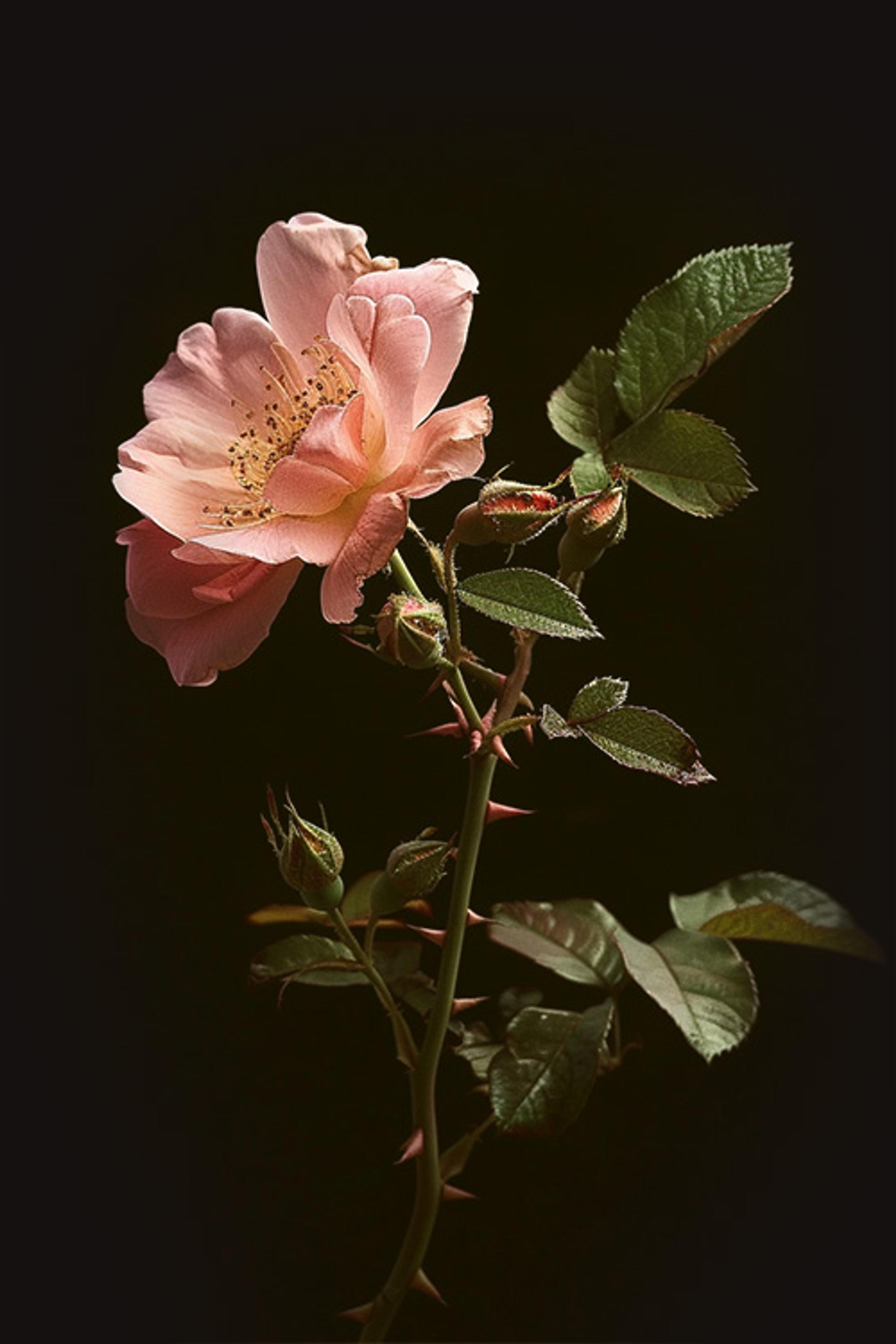

The Meaning of the Prickly Wild Rose
In ancient Greek mythology, the wild rose is a powerful symbol of love and adoration, with strong ties to Aphrodite, the Greek goddess of beauty and love. In fact, Aphrodite is often portrayed with a crown of roses resting atop her head. [1]
Legend has it; a rose bush grew within the pool of spilled blood from Adonis, Aphrodite’s lover. This can be interpreted in a few different ways; however, the most common is in reference to the wild rose as a symbol of immortal love or a union that will never fade – not by time, nor by death.
The Romans also took to adopting many Ancient Greek legends and deities; however, they named their deity of love Venus. They attributed the wild rose to Cupid, an offspring of Venus, the deity of love. According to myth, Cupid was busy shooting arrows in a garden of roses when he was stung by a bee mid-shot. Later, as Venus was perusing through the garden, she pricked her foot on a thorn left by Cupid, which, in turn, stained the roses with blood.
Roman Emperors used to dump crazy amounts of rose petals on their dinner guests as well…do we know why? Absolutely not, but we’re here for it.
Ever heard of the term “sub rosa”? It means “under the rose,” and stems from the Roman practice of hanging roses above meeting tables. It is said that anything spoken while under the rose-ceiling shall never be repeated anywhere else, leading us to believe the rose is also a symbol of secrecy.
In Medieval times as well as Christianity, roses became a symbol of power. A rose bush is said to have grown at the site of Christ’s death, associated the red rose, specifically, with Christ’s blood, and the thorns of the wild rose, symbolizing the ultimate sacrifice.
If Tarot cards are your thing, the Tarot considers the rose a symbol of balance, promise, new beginning, and hope. [7]

"Love is like the wild rose-briar."
Emily Bronte
The History of the Prickly Wild Rose
As the provincial flower of Alberta, Canada, the province adopted the prickly wild rose in 1930 after the editor of an Edmonton newspaper suggested they select a floral emblem. The Women’s Institutes heeded this suggestion and passed it on to the Department of Education, and the school children of the province actually made the final decision! [2]
The prickly wild rose itself has been and remains a super important food source for grouse, snowshoe hares, and microtine rodents. In Alaska, snowshoe hares enjoy these roses all year round, but they become a hot commodity amongst wildlife in the summer months.
Black bears, grizzly bears, and songbirds all eat prickly rose hips in the fall as well. The hips of a prickly rose are incredibly high in vitamin A and, in the winter, are an excellent source of vitamin C. These blooms are also known to provide shelter for many woodland creatures. Their thicket, specifically, provides ideal nesting sites and protective cover for birds and small mammals such as deer and elk.
There are also quite a few health benefits for humans associated with rose-hips, as well!
As a rich source of vitamin C, rose-hip is often used as a remedy for rheumatoid arthritis, as it reduces symptoms of knee and hip osteoarthritis and helps our immune system fight off foreign invaders and out of control cells. But that’s not all!
Rose hip also facilitates fat metabolism, protects tissues from free radical damage, assists the nervous system by converting certain amino acids into neurotransmitters, prevents scurvy, protects joints and connective tissues and adrenal function, has the ability to prevent urinary bladder infections, and assist in treating dizziness and headaches! WOW, that’s a lot! Rose hip is commonly used externally in oil form to restore firmness to skin by nourishing and astringing tissue. Rose hip tea is also commonly used during menstruation to make up for iron loss. [3]
DID YOU KNOW - Prickly Wild Rose Fun Fact
The fruit of the Prickly Wild Rose has a high vitamin C content and makes excellent jelly. [6]

How to Grow Prickly Wild Roses
It’s the moment you’ve all been waiting for.
IT’S TIME TO PLANT!
As traditional wildflowers, wild roses are quite easy to grow and are pretty much self- sufficient. Since they don’t have the same complex blooms of hybrid roses, they don’t need fertilizer or pesticides either!
That’s what we like to hear!
Most of the time, you won’t even have to prune your shrub of roses, unless, of course, you want to.
When choosing your planting spot, be sure to select an area that receives full sun and well-draining soil.
Dig a hole that is as deep as the planter your shrub came in, usually about a foot deep and 1-2 feet wide. Place your wild roses in the hole, cover with soil, and pat down firmly. Feel free to add soil to the top if you’d like, but it’s not necessary. Water your new roses about once or twice a week for about 5 minutes.
In the spring, when the leads are hard, you can prune your wild roses if you’d like by trimming off any dead leads or excess growth you don’t want!
Finally, step back and enjoy watching your new wild roses grow! [4]
DID YOU KNOW - Prickly Wild Rose Fun Fact
Staying true to their name, small bristles and prickles cover the stems of the Prickly Wild Rose. [6]
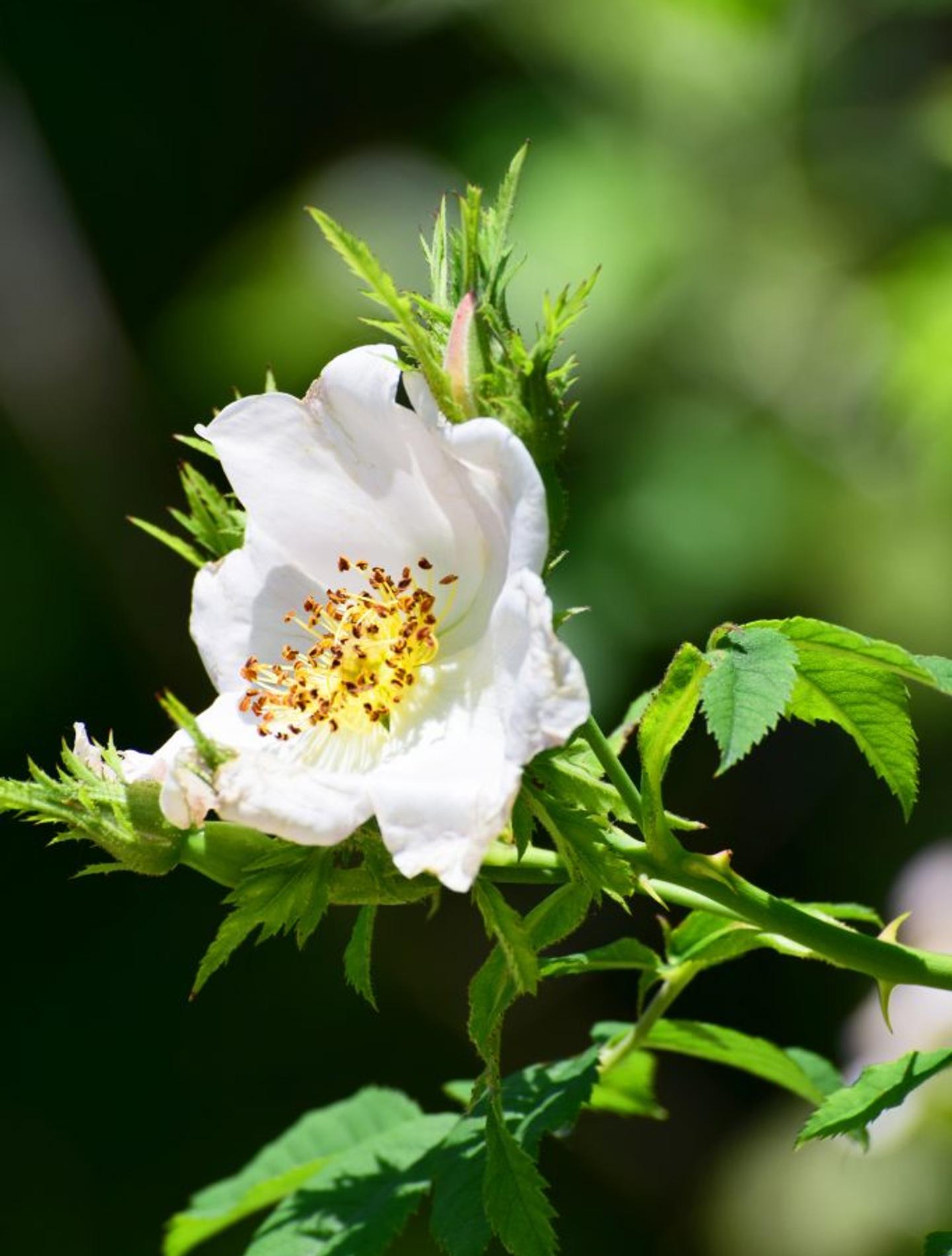
How to Care for Prickly Wild Roses
If you’re fortunate enough to have wild roses growing near your home, of course, you’re going to want to bring some in to enjoy (not to mention, they smell amazing!).
BUT there actually is a right way to cut your roses to ensure you get the best out of them once you bring them inside. Michael Marriot, a technical manager, and senior rosarian for David Austin Roses (swanky, huh?), knows A LOT about roses.
Marriott’s rose-growing philosophy begins with how you cut them.
- The type of clippers you use. The sharper, the better! Cut your rose stems neatly without compressing their water uptake.
- Cut them early in the morning while they are still fully hydrated.
- Choose blooms in the late bud stage (hint: their outer petals are already open, but their flowers are not).
- Cut from the front of the shrub. These blooms will be the strongest as they have received the most sun!
- Re-cut your rose’s stems every 2 or 3 days and give them fresh water! [5]
When to Send Prickly Wild Roses as a Gift
Give these wild blooms as a gift, either in a stunning handmade flower bouquet, or in the form of a shrub, to celebrate a loved one! Have a secret crush? Use the prickly wild rose to display your adoration and love!

References:
- 1 - The Present Tree
- 2 - canada.ca
- 3 - Rxlist
- 4 - Garden Guides
- 5 - Fine Gardening
- 6 - Boreal Forest
- 7 - Roz Buehrlen
Flower Meanings — keep discovering
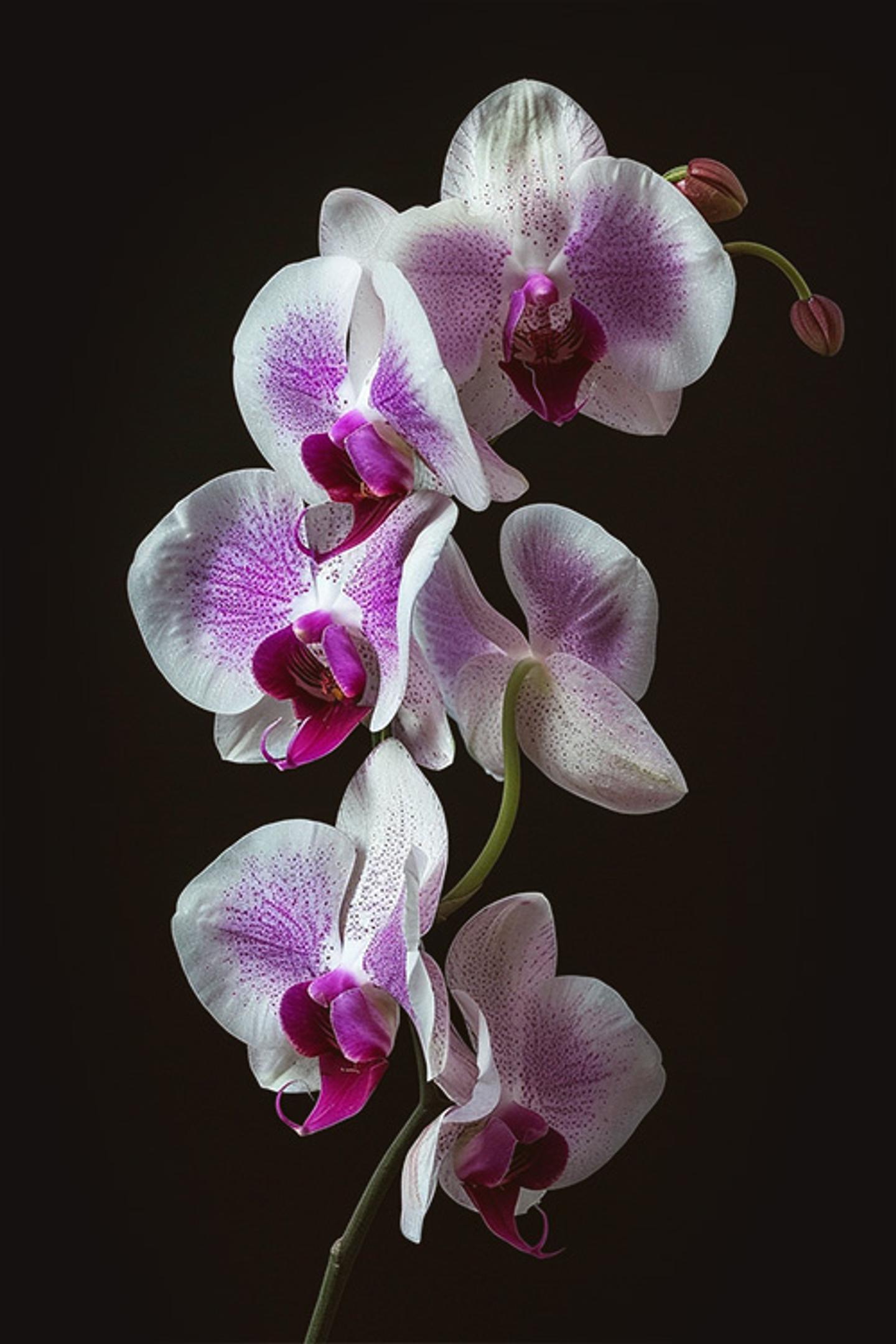
Orchid
As one of the oldest flowering plants and with over 200,000 different species, the history and symbolism behind these ancient blooms will blow your mind.
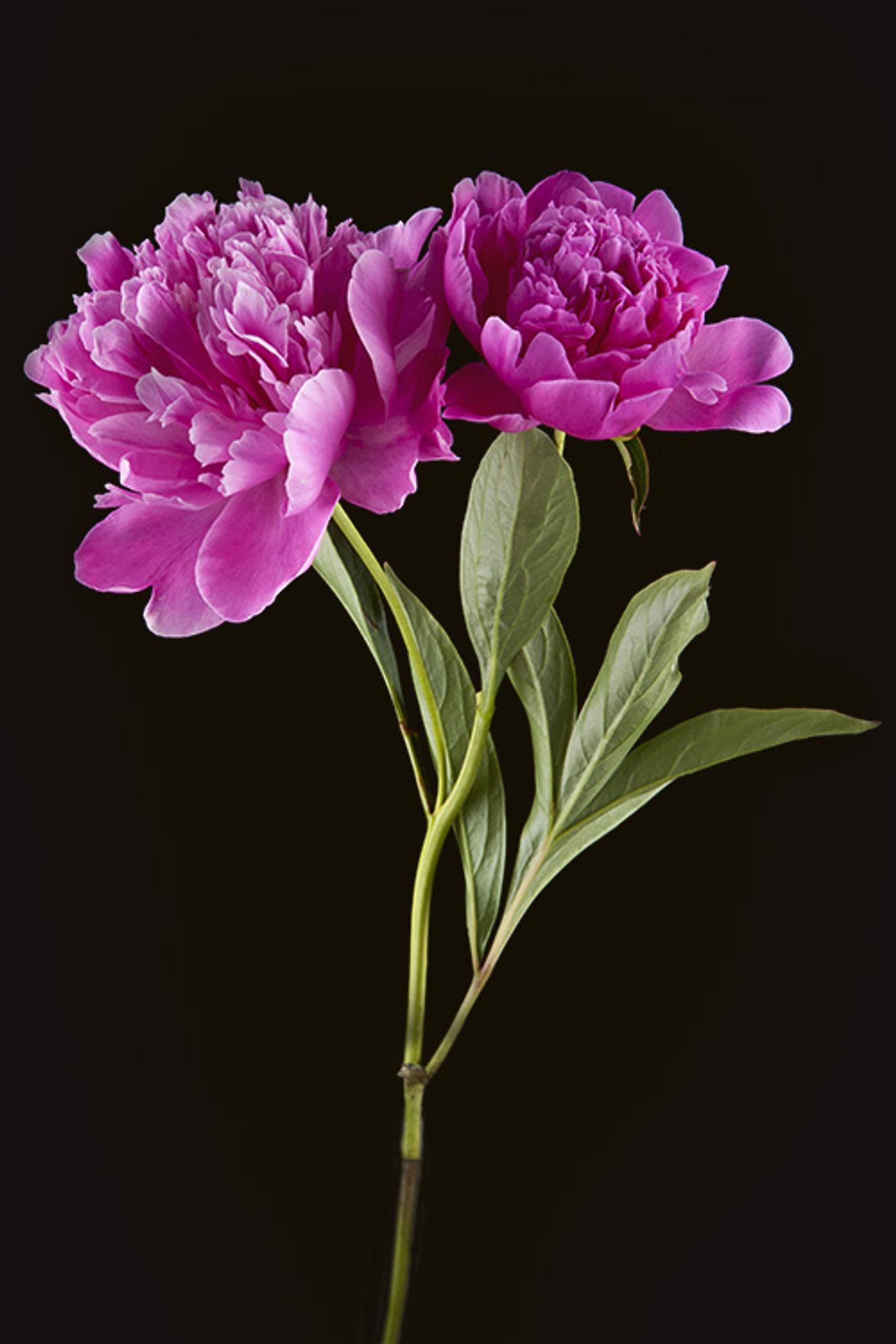
Peony
It’s plain to see the sheer beauty of the peony, and if you’ve ever gotten up close and personal with one, there’s no denying that their beauty pairs nicely with their enticing, floral fragrance that we just can’t seem to get enough of. If you thought the peony couldn’t possibly contain any more sophisticated beauty, you thought wrong!
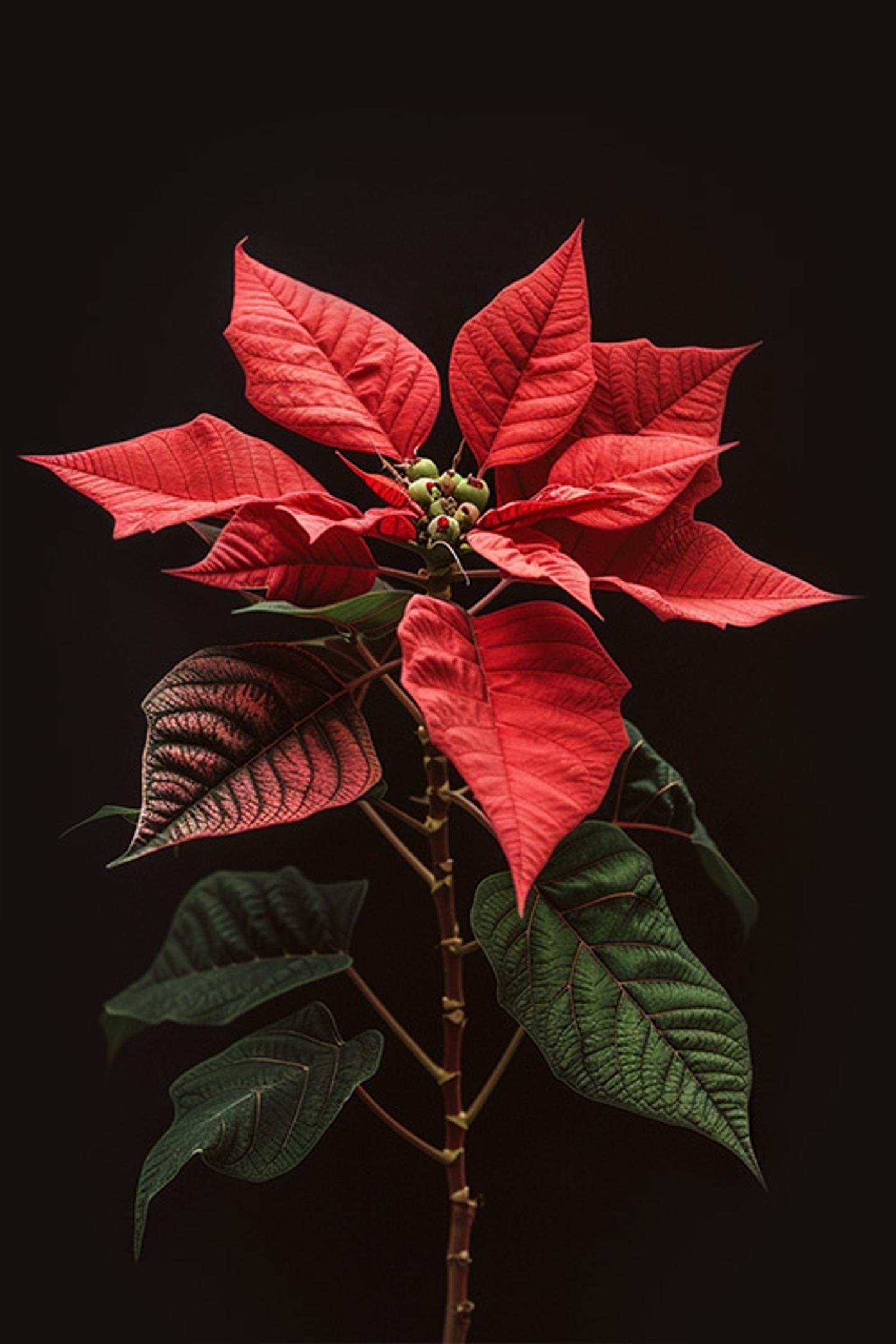
Poinsettia
The ultimate holiday plant – Poinsettia in the house! Known for its classic red and green foliage, these beautiful red blooms are frequently used in Christmas floral arrangements, churches, and commonly given as gifts throughout the holiday season!
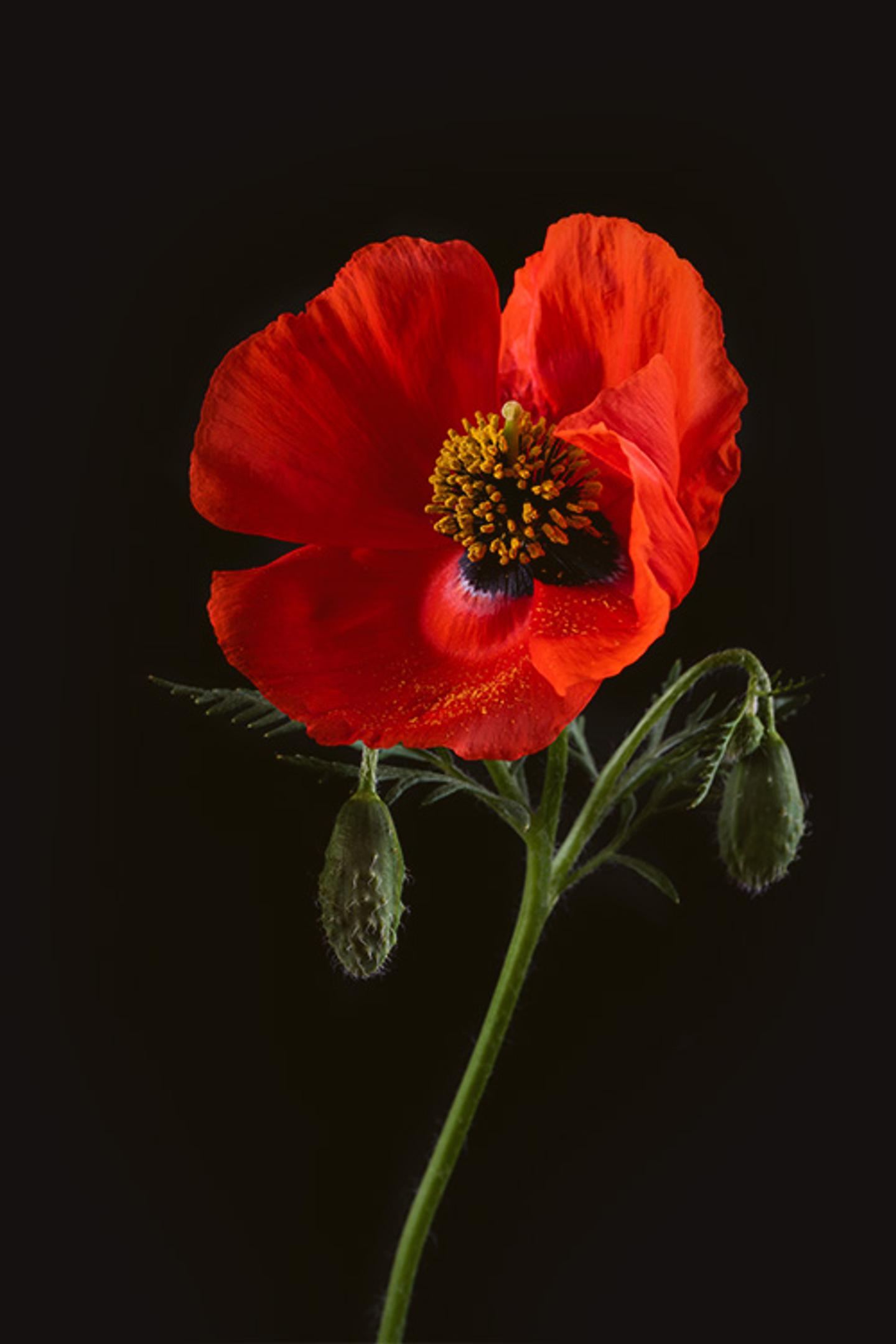
Poppy
They’re stunning, they’re elegant, they’re vibrant and beautiful! With their endless colors, ease of growth, and bountiful symbolism, these blooms are way more than just a pretty face!

Orchid
As one of the oldest flowering plants and with over 200,000 different species, the history and symbolism behind these ancient blooms will blow your mind.

Peony
It’s plain to see the sheer beauty of the peony, and if you’ve ever gotten up close and personal with one, there’s no denying that their beauty pairs nicely with their enticing, floral fragrance that we just can’t seem to get enough of. If you thought the peony couldn’t possibly contain any more sophisticated beauty, you thought wrong!

Poinsettia
The ultimate holiday plant – Poinsettia in the house! Known for its classic red and green foliage, these beautiful red blooms are frequently used in Christmas floral arrangements, churches, and commonly given as gifts throughout the holiday season!

Poppy
They’re stunning, they’re elegant, they’re vibrant and beautiful! With their endless colors, ease of growth, and bountiful symbolism, these blooms are way more than just a pretty face!
Ready to send beautiful flowers?
Our guided experience helps you send a one-of-a-kind arrangement perfect for every occasion.
Send Flowers